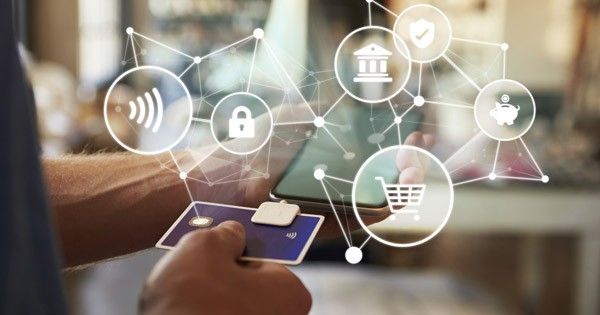Stay connected
Subscribe to our Inside WEX blog and follow us on social media for the insider view on everything WEX, from payments innovation to what it means to be a WEXer.
"*" indicates required fields

What do a smart refrigerator and an insurance payment have in common? More than you might think, considering the evolution of connected device technology. They’re both part of the Internet of Things (IoT)—yes, even the insurance payment. The IoT’s potential impact on business operations and consumer shopping behaviors is spurring innovations where you might least expect it. And that includes insurance payments.
Technology is advancing at such a rate that companies are able to collect very granular information from the things that keep their operations running. By connecting business assets—machines on the factory floor and commercial fleet vehicles, for instance—via sensors and networks to office administration/ analytics tools, decision-makers are getting deep insights into productivity and costs that simply weren’t available to them before.
The insights can be game-changing. Our post Making the Connection: The Internet of Things and Payments examines the IoT’s role in informing business strategy, citing Verizon’s prediction that by 2025, best-in-class organizations that extensively use Internet of Things technologies in their products and operations will be up to 10% more profitable. (Read their report The Internet of Things 2015.)
In the insurance industry, we can expect to see B2B processes touched by IoT technology. The most significant of Forbes’ 5 Ways The IoT Will Transform The Insurance Industry is Carrier Process Transformation. The article says that carriers will have to re-imagine how they will store, sift through and use their portion of data produced by the IoT. “The challenge of turning data into usable insight,” the author states, “will be immense and will require carriers sophisticated IT, data warehousing, analytics and business analyst teams to make meaning out of the data gathered.” And this will result in carriers adapting their business functions to accommodate changes to the way they do business.
This expectation is echoed in ATKearney’s The Internet of Things: Opportunties for Insurers, which examines how the “connected ecosystem” will open up new possibilities for carriers and improve the economics of their core business models to better serve their B2B and individual customers’ needs. The use of data analytics, for example, can result in more efficient claim payments. And some carriers are currently using consumer-facing IoT devices (e.g. wearable biometric sensors and vehicle telematics tools) to measure insureds’ behavior, collecting metrics that help them understand risk and make necessary premium adjustments.
It’s not inconceivable that consumers will someday have the option of paying their premiums through connected devices; they may already make insurance-related payments through a mobile wallet. Ingenico ePayments’ The Internet of Things: Rise of the Machine Shopper points out that thanks to the IoT, consumers, and even machines, will be able to complete certain transactions automatically on a regular or semi-regular basis. They claim that this will require a nearly invisible payment process, which, they say, should “ultimately take the customer’s mind away from the payment specifically and focus them on the overall convenience and user experience.”
Turn to The Internet of Things Is Turning Into the Internet of Payments to examine the concept of devices making payments and the potential impact on companies’ payment policies and processes.
Convenience is indeed the goal of contactless payments that consumers make at the point of sale as well as online through both browser- and mobile-based ecommerce payment platforms. With their insurance payment processing solution, the FlexPay wallet, Tungsten Solutions has been lauded as a leader in IoT payments. Their website highlights Insurance Information Institute stats that the U.S. insurance industry’s net premiums written totaled $1.2 trillion in 2015 and that 67% were paid by paper, not electronically. By working with insurance agents, credit unions, carriers, and other vendors to combine their payment processing with data analytics, they serve the B2B marketplace by enabling online payment transactions and providing their partners with the rich payment and behavioral data they need to drive business.
These are just the beginnings of the IoT and insurance conversations. Whether the IoT ushers in changes to business strategy, operations, or consumer payment methods, it’s positioned to support agility, transparency, and simplicity in the way insurance companies transact. Ultimately, it points to a continued movement to electronic processes—and that probably means increased digitization in insurance payments, in one form or another. For more about payments and the IoT, read Payments in the Internet of Everything.
Subscribe to our Inside WEX blog and follow us on social media for the insider view on everything WEX, from payments innovation to what it means to be a WEXer.
"*" indicates required fields